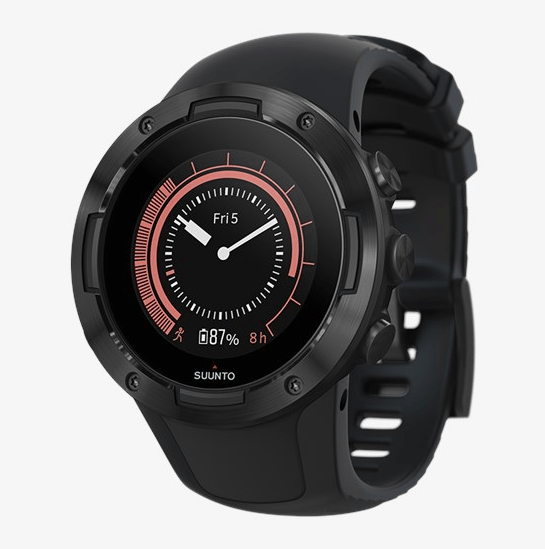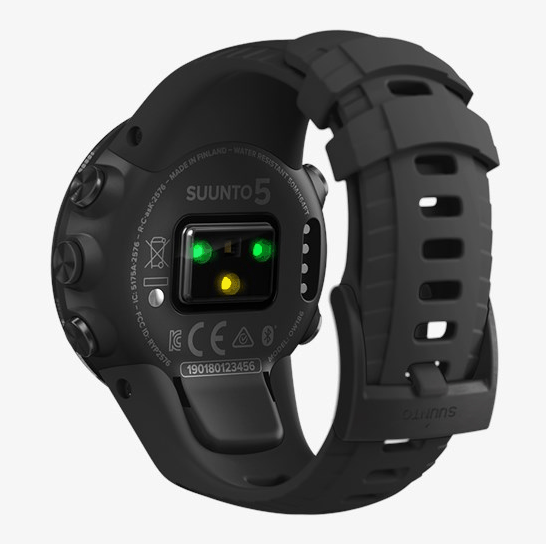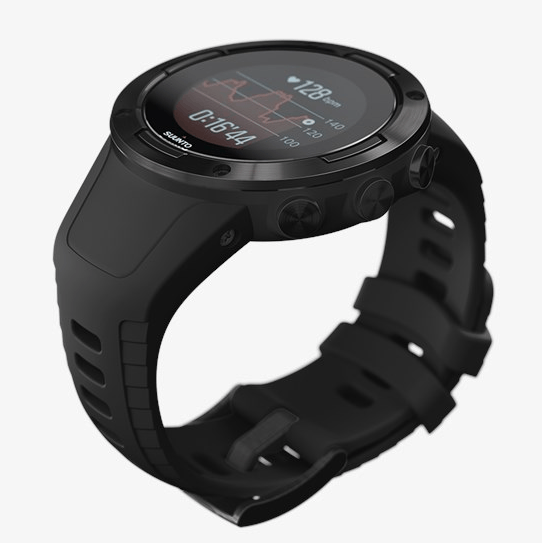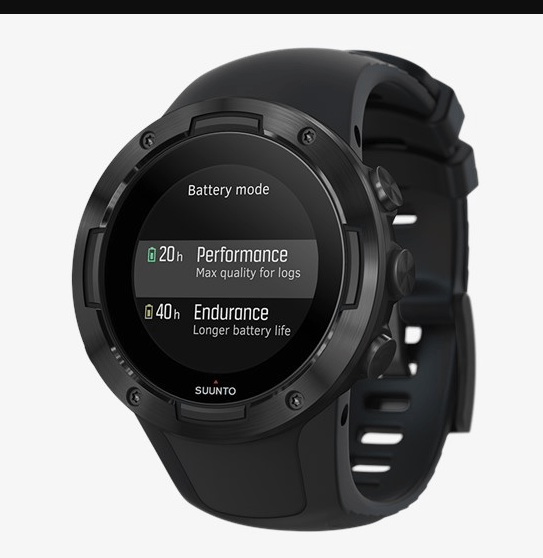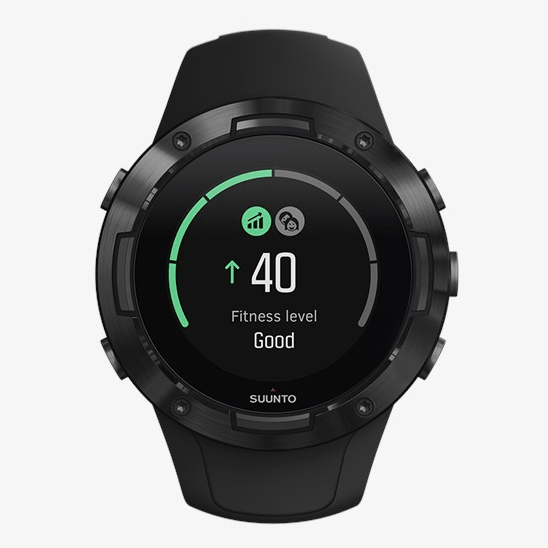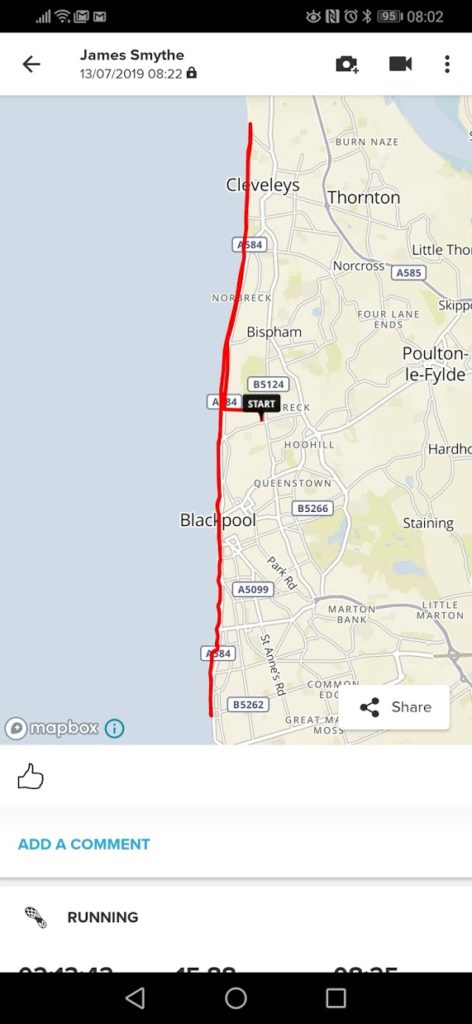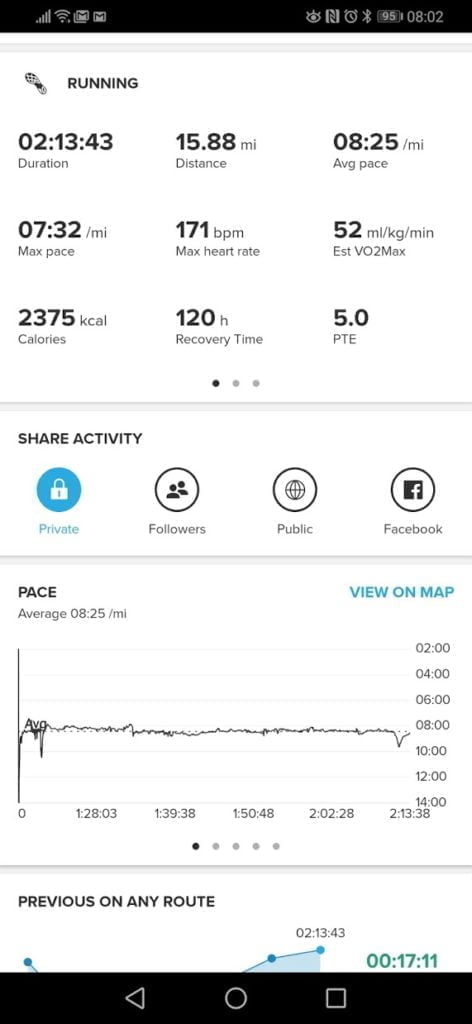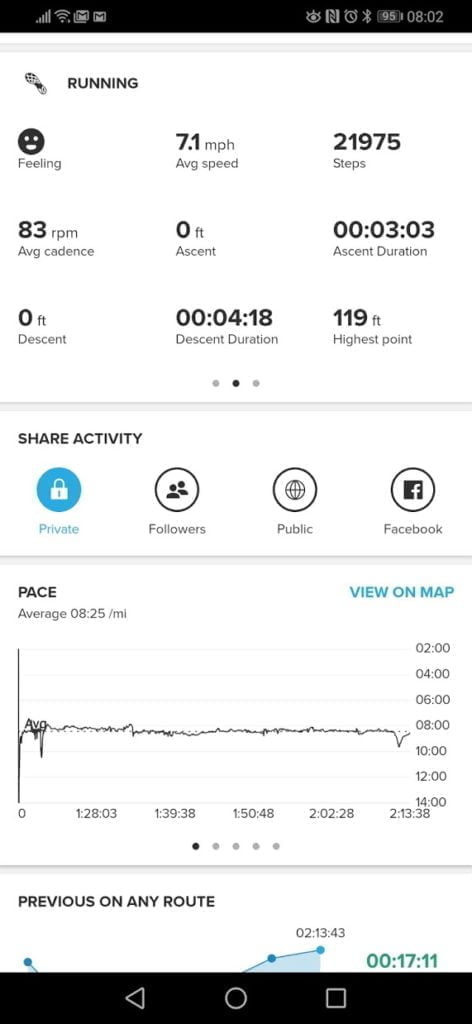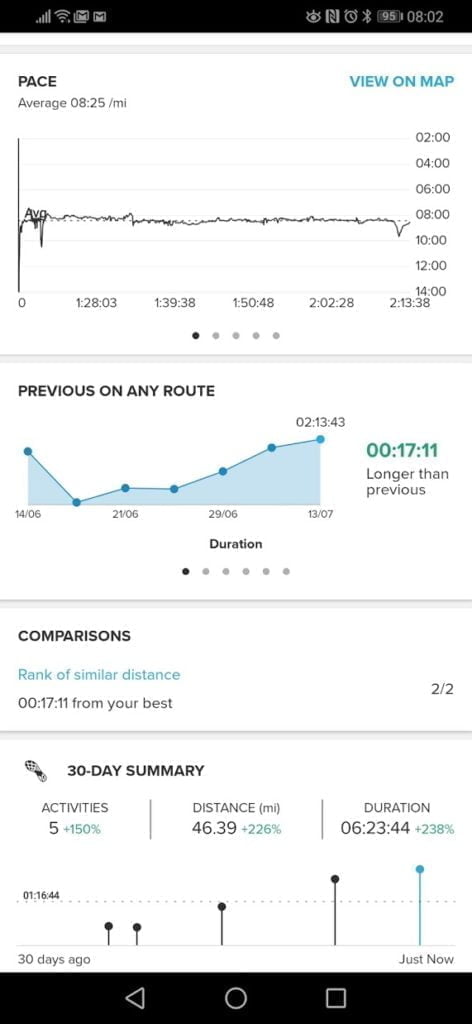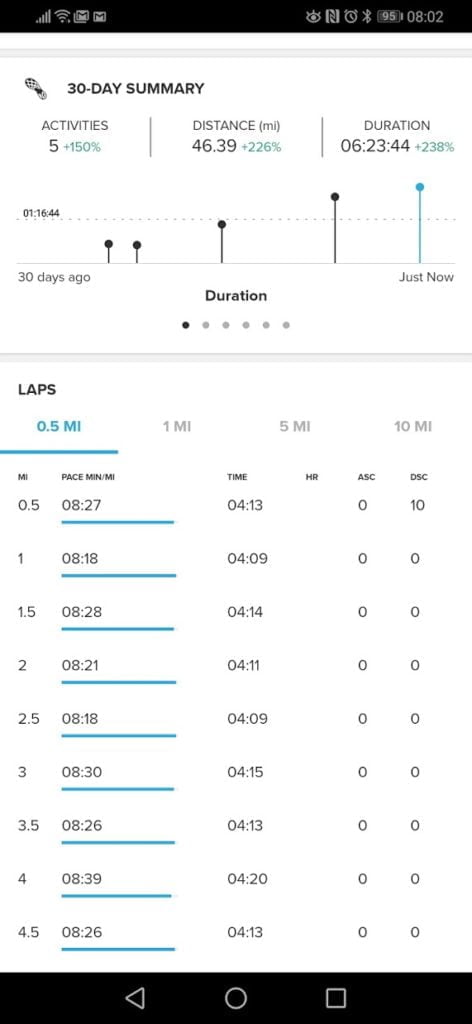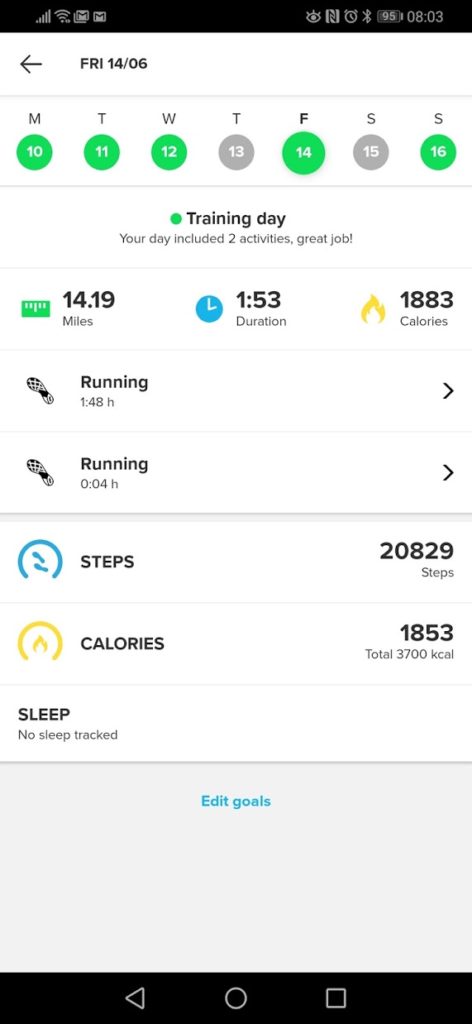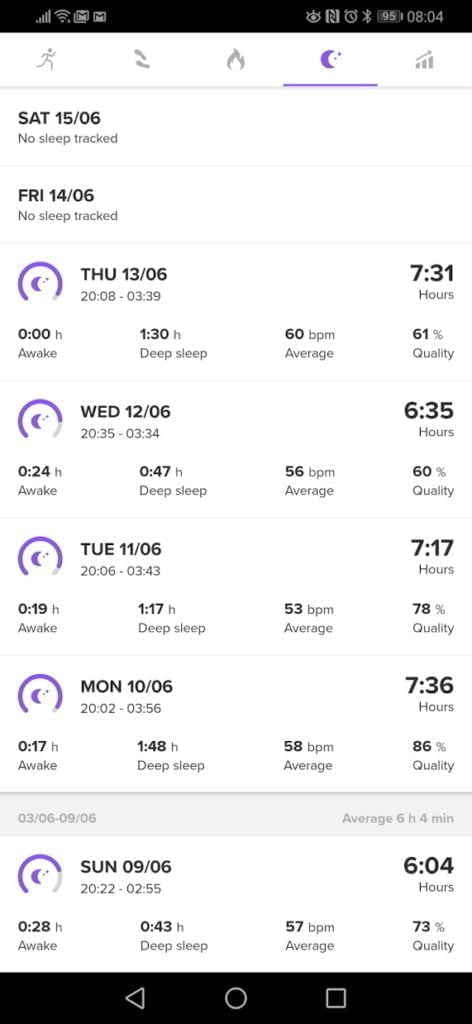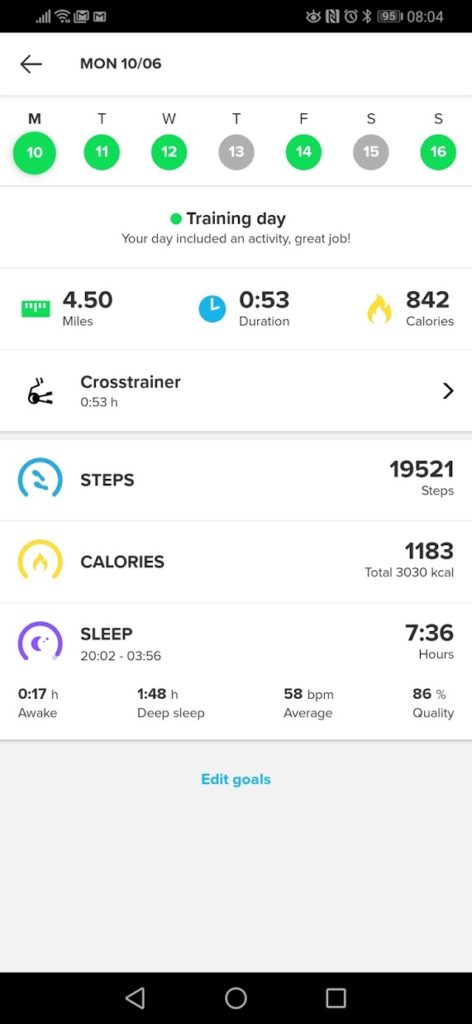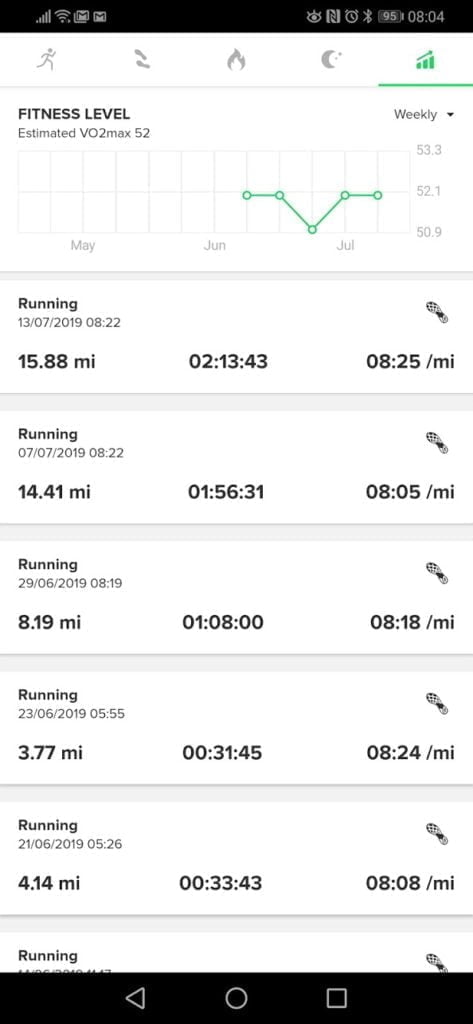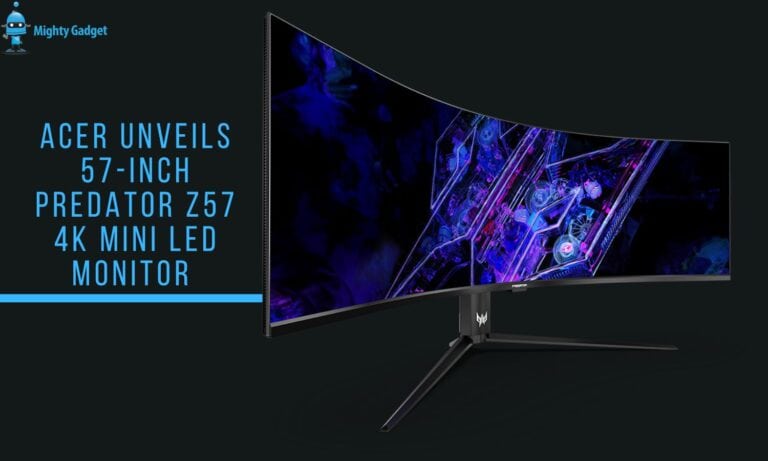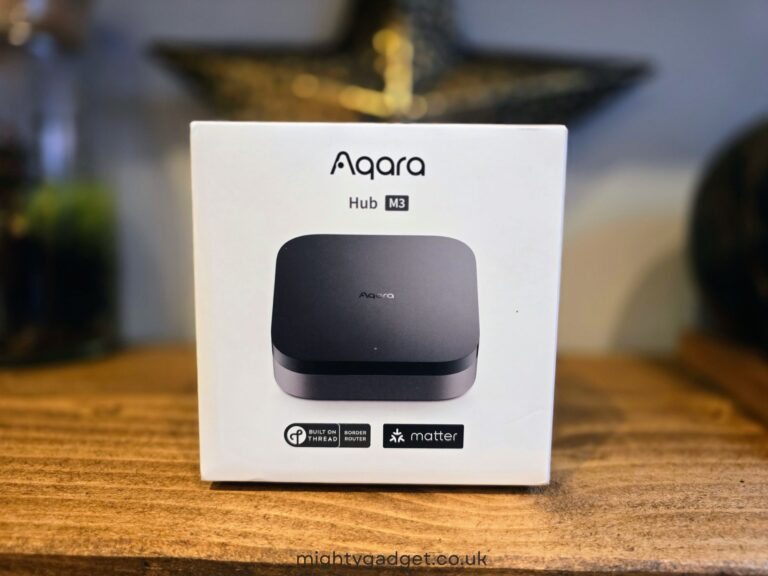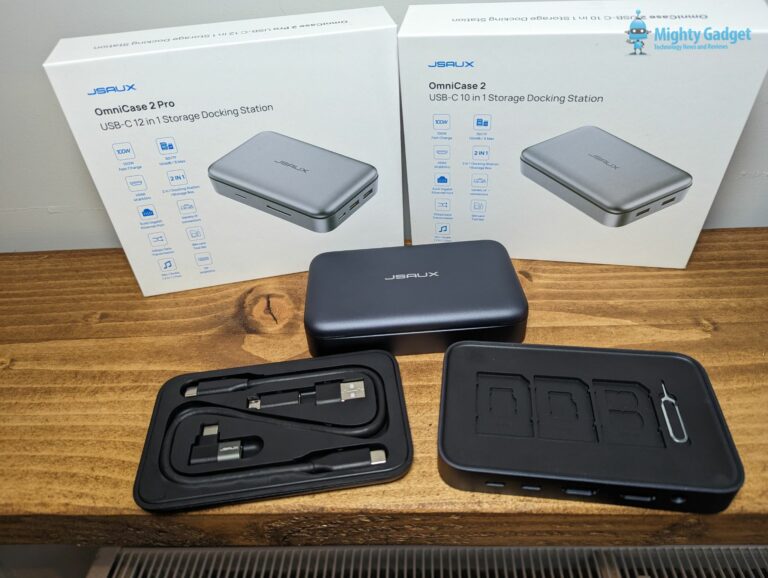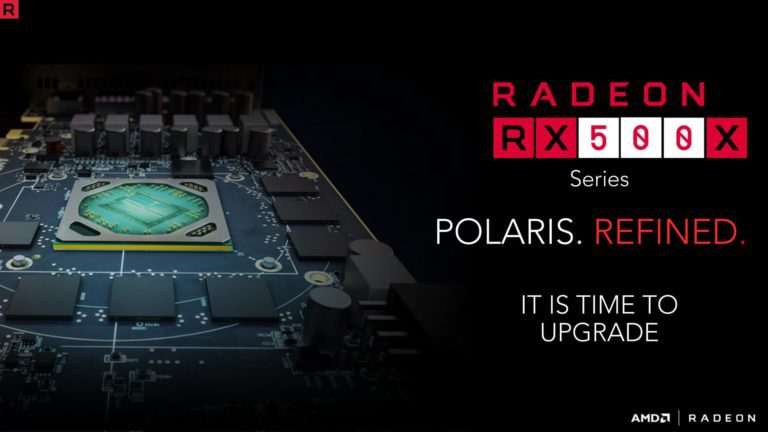Any links to online stores should be assumed to be affiliates. The company or PR agency provides all or most review samples. They have no control over my content, and I provide my honest opinion.
The Sunnto 5 is the latest mid-range watch from the Finnish brand, this delivers many of the features from the Suunto 9 but at a more wallet-friendly price. At £299 it is perhaps in the most popular price bracket for this type of watch, competing with the Garmin Forerunner 245 Music, Forerunner 645 none music and the Garmin Fenix 5 none plus.
[content-egg module=Amazon template=list]
Key Features
- Screen Resolution: 218x218px
- Size: 46mm x 46mm x 14.9mm/15.7mm (some bezels can be slightly thicker)
- Weight: 66 g / 1.98oz.
- Intelligent Battery Modes – 14-day standby, 20hrs GPS+oHR. Up to 40 hours with power saving options
- All day stress & recovery
- Wrist HR
- 80 Sport Modes
- 24/7 Activity Tracking
- Personalised Training Plans: Cardio – these are the adaptive training plans covered earlier and which are based on the training effect of your workout and other factors.
- Sleep Quality Assessment – uses heart rate and movement to detect how well you sleep
- VO2max – Not accurate but should give you an idea of your overall fitness. The main things is to keep it going up or maintaining
- Fitness Age – will show you what the normal age is for someone with the same VO2max as you
- 50m Water Resistance
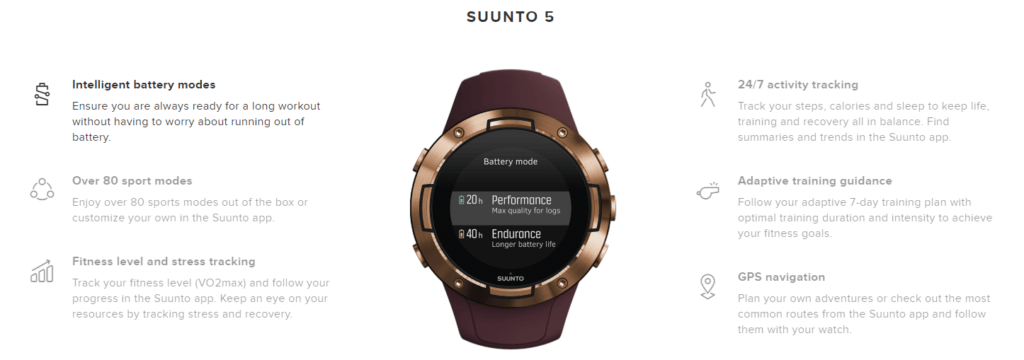
Added Features from Suunto Spartan Trainer
- Increased battery life from 10hrs to 20hrs in regular modes, and 30hrs to 40hrs in extended modes
- Changed from plastic bezel (base option) to stainless steel bezel
- Changed from plastic screen (base option) to mineral glass
- Added adaptive training plans
- Added sleep quality metric
- Added stress tracking metric
- Added body resources metric
- Added VO2Max fitness level
- Changed GPS chipset from MediaTek to Sony
- Changed GPS recording track modes from Best/Good/OK to Best/Good
- Added additional GPS options: GLONASS, Galileo, and QZSS
- Added intelligent battery modes: Performance, Endurance, Custom
- Made the bezel appear slightly more swanky than the plasticky looking Spartan Trainer
- Approx. the same weight: 66g for Suunto 5, to 57g/66g/74g for Suunto Trainer variants
Differences Between Suunto 9
- No barometric altimeter
- No compass
- No adjustable brightness level
- No touchscreen (buttons only)
- No access to legacy Movescount platform
- Does include stress, body resources, sleep quality, and adaptive training.
Design and screen
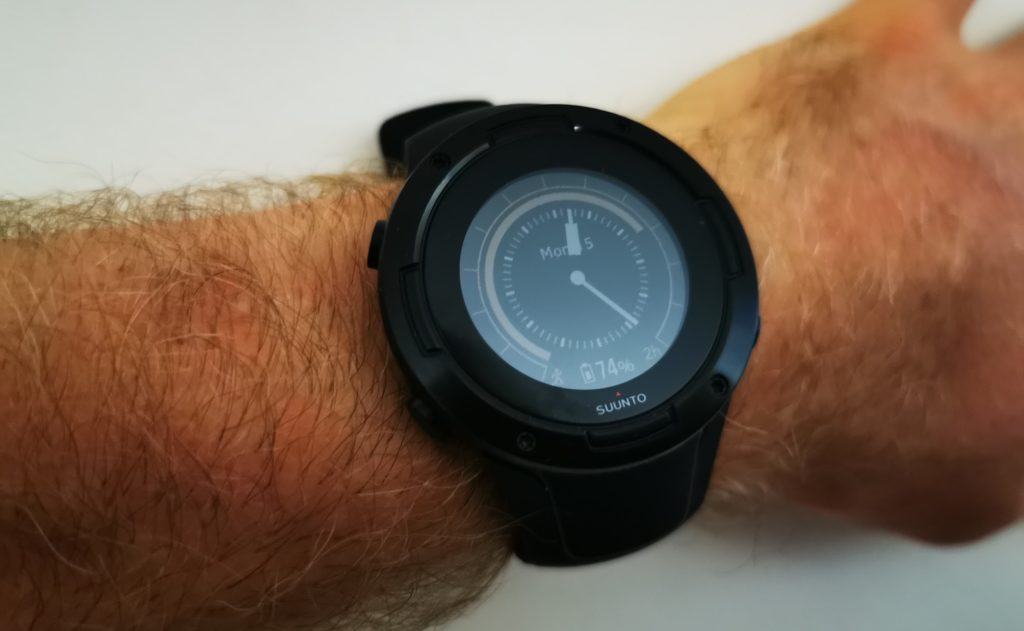
Design wise this is similar to the Suunto Spartan Trainer Wrist HR, and smaller on the wrist than the Suunto 9. Its sporty looking watch but good looking and well made. The all-black design lends itself well to being worn for most casual scenarios.
The buttons feel sort of squidgy and require a firm press, this can lead to not pressing it when you expect to, but conversely, it should avoid you stopping activities by mistake. Or a common issue I had with the Garmin 235 was to start an activity in my sleep, only to be woken by the watch vibrating.
The screen is quite small compared to the overall watch face, this gives it some chunky bezels. Working with mobiles a lot, and their obsession with zero bezels, it does look a bit dated, but once I got used to it, there were no issues.
The display is perhaps not quite as readable as the Garmin Fenix 5. It is a bit darker, which probably helps with the battery. Neither watch can compete with the bright displays of smartwatches.
App
Love it or hate it, Suunto has ditched Movescout completely with this watch; this now means there is no web access to your data, which I am not a big fan of, I love to be able to digest all my stats on a big screen.
Also, while this may not apply to a lot of people, due to the app only interface getting the FIT files was a chore compared to Garmin. I had to download them to my phone, go to the download folder then share with Google Drive or Telegram, so I could access them from my desktop. It is a minor but notable inconvenience.
That being said, the Suunto is well designed, easy to use, and has all the data you need to access. It now supports plenty of third-party apps including Strava, and is probably one of the reasons why they don’t bother with a web app, as everyone just uses Strava.
Importantly, you have all the geeky stats you may want to check out including pace, HR, cadence, steps and then also PTE (Peak Training Effect) and EPOC (Estimated Post-Exercise Oxygen Consumption).
Even though this does not have a barometer, you still get ascent and descent data, but it is a guess and nothing close to what you really did.
Training Plans
The Suunto 5 auto generates 7-day training plans based on the goals you set – with the choice to ‘Maintain’, ‘Improve’ or ‘Boost’ your fitness.
For each recommended session, you get a target duration, and intensity and the watch provides real-time updates during your session to keep you working at the right rate.
Alternatively, the adaptive plan will adjust the targets based on your previous sessions and recovery.
In reality, it is quite basic, though with this being priced more affordable than the Suunto 9, it could attract more casual users. The adaptive plan is useful to get to grips with the idea of recovery.
Health Stats and Sleep
Suunto has introduced various features to match Garmin. This includes stress, recovery, resources, and also sleep tracking.
Most of these are heart rate based, with the stress being classed as Active, Inactive, Stressed and Recovering is refreshed every 30 minutes.
Resources (Garmin calls it your Body Battery), a percentage score that should help you identify when your body is at its most responsive and ready to capture the maximum benefit from your efforts.
Sleeping tracking uses heart rate, movement and pre-defined sleep times. I used it for a few nights, and it was reasonably accurate as far as these things go. This is another health metric that I have found notoriously inaccurate to track for almost every device I use. Garmin has a bad habit of getting my sleep times wrong so sometimes I will be classed as having 11 hours sleep. The Suunto seems to have done well in this regard and looks like it was semi-accurate for the days I used it.
Battery Life
While it can’t compete with its bigger brother, battery life is exceptional. There are two different battery modes plus the option to customise your own. If you realise you are running low of juice during your Ironman, you can switch to a more conservative mode mid-event.
You can do things like change the GPS accuracy from off/ok/good/best which changes the frequency that your location is marked.
The end result is 20hours tracking for regular use and up to 40 hours in power saving, plus a 14 battery life. In comparison the Forerunner 645 has 7 days in smartwatch mode; 5 hours in GPS mode and the Fenix 5 Plus 12 days in smartwatch mode and 18 hours GPS.
On my last run with this watch, I tried the endurance mode compared to the Garmin in normal use. Both from full charge Garmin dropped 20% in battery while the Suunto was just 10%.
Hear Rate Accuracy
Wrists based HR accuracy is an awkward one for me, it is never great depending on the sport, and I have criticised it quite a bit in the past. For newish people getting into these watches, you don’t expect to pay £300 then have poor tracking results. However, it is not the manufactures fault really, just our bodies, the wrist has to be one of the worst places to locate a sensor due to movement and hair. Placement can improve things, moving it up your arm, and sometimes flipping it over to the inside.
So the results here are expected, for things like runs, if the placement is good, accuracy is decent but you still get a few peaks and troughs.
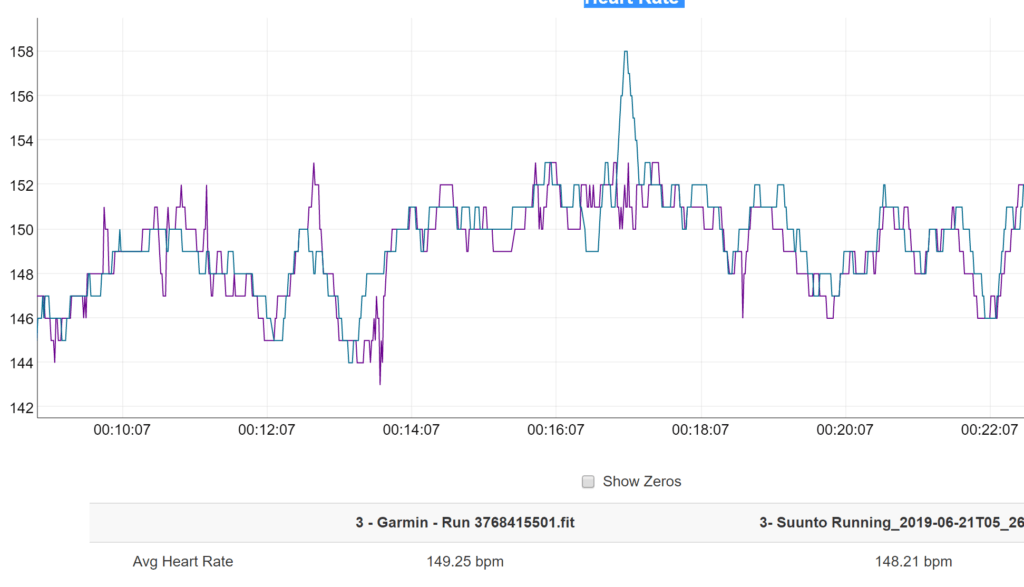
If you don’t have perfect placement, results will be not so good. For me, this is far to easy to do, I’m normally rushing around before a long run and always forget something. So changing the position of my watch is rarely something I do.
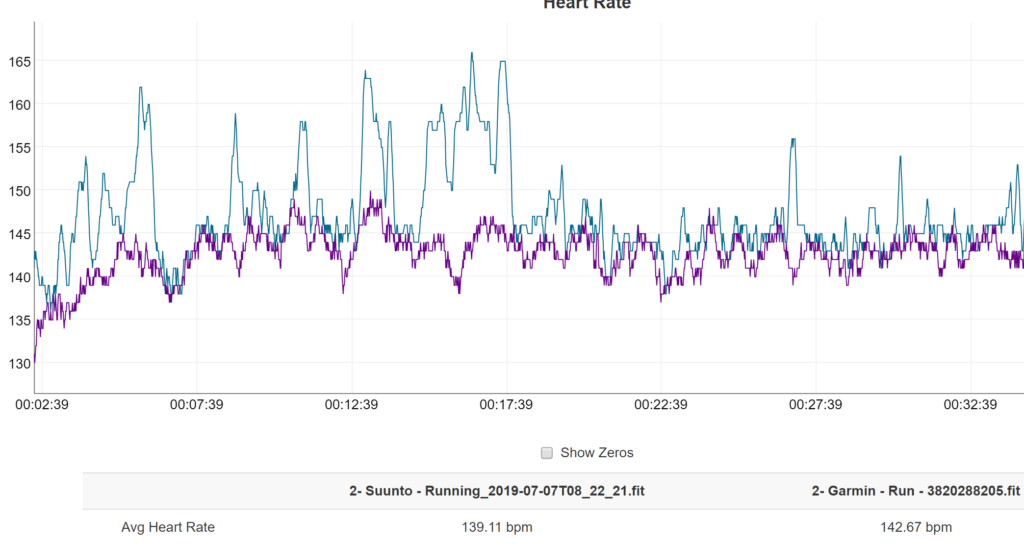
Cycling accuracy is always poor for me, and I assume most people. In my 65Km ride, the watch actually did really well until the last 10 mins where it bottomed out totally and decided my HR was about 70, which resulted in a lower average heart rate. In my slightly longer 70km ride it was all but useless with regular drops of around 10 mins or so, which resulted in an average of 99.81 bpm vs the 123.06 bpm chest strap on the Garmin.
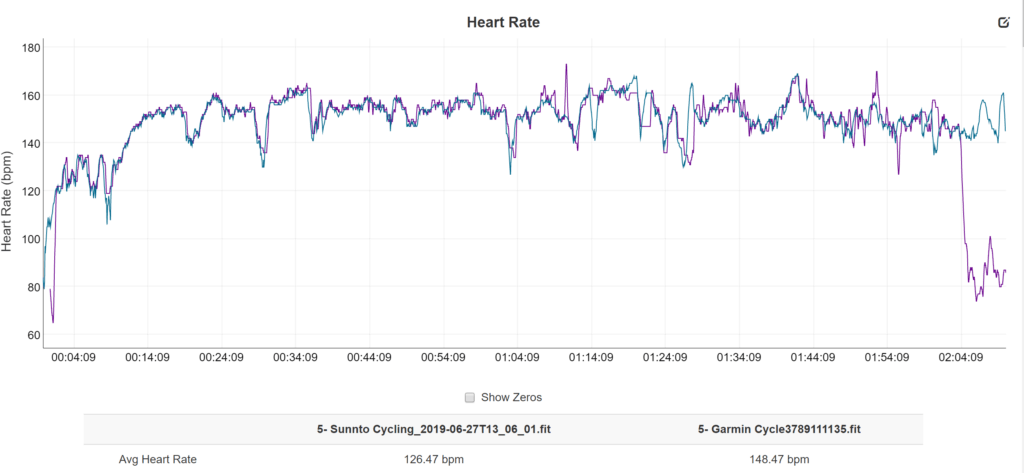
Indoor cycling suffered from the same issue I have experience with all my Garmin watches, it won’t read the HR properly for the first 10 mins, but then be quite accurate throughout the rest of the session.
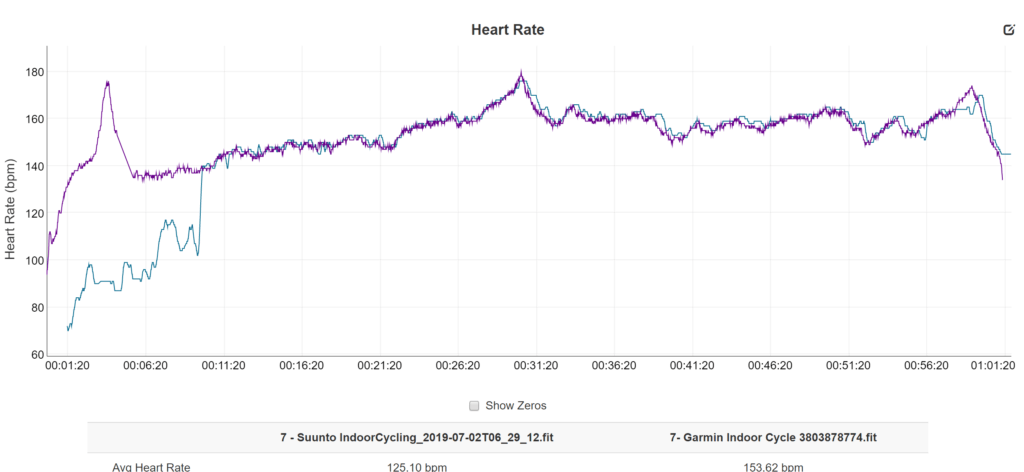
Overall, my recommendation for every sports device is to use the wrist OHR for 24/7 tracking, which is very accurate, then use an optical arm strap like the Polar OH1 or a chest strap whenever you can for things you want to track accurately.
GPS Accuracy

I have to admit; GPS accuracy is pretty low on my list of priorities with a sports watch. I suppose the most important thing is that it tracks the correct distance for races so that Strava identifies it as such.
There is some variance in my bike rides with the end result being around .5km compared to the Garmin 520 bike computer. However, the Fenix 5S and Suunto 5 are within .1km of each other so I would say this is the correct distance and a difference of 0.13% between devices.
Similarly, for runs, the total distance is almost identical with a maximum of 0.2% variation.
In the endurance mode, the differences increase, but surprisingly, it is still quite accurate. The Garmin recorded 25.79km for my last run while the Suunto had 25.55km which is less than 1% difference.
Looking at the maps of the endurance mode, it doesn’t look overly accurate, and you can see exactly how it is saving battery. The GPS sampling is much less, so all the lines are perfectly straight. As I ran quite a straight route, in general, it was perhaps a little more accurate than it should have been. A windier route may not be as accurate. In general, though, I would only use this if I forgot to charge my watch, or on some ultra-endurance event. That being said, it is a feature that will be extremely useful in these situations, it is quite easy to forget to charge your watch before a big run or bike ride.
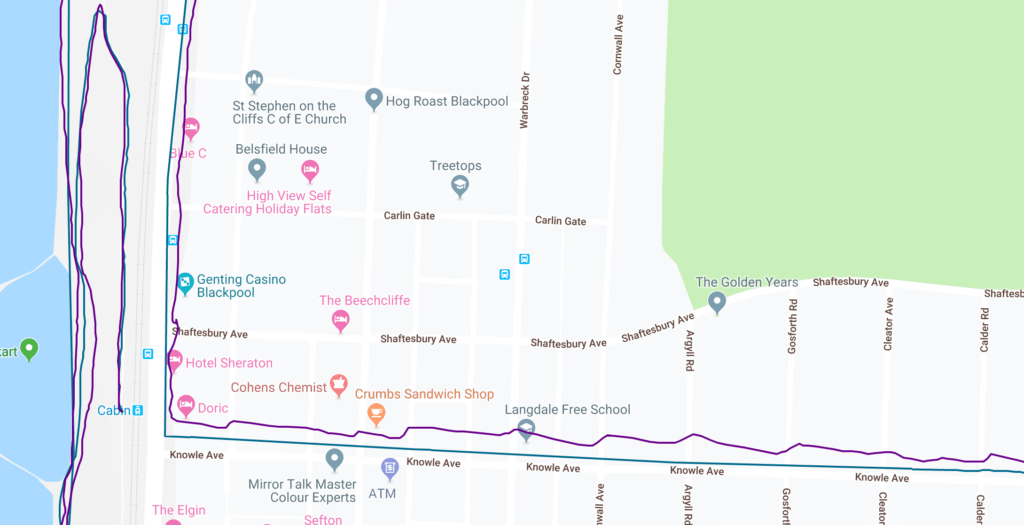
Overall
The Suunto 5 is an excellent upgrade from the Spartan Trainer, while also sitting nicely below the Suunto 9, being much more affordable, and not sacrificing many features. As nice as a barometric altimeter and compass are, I never really make the most of them. Obviously how important they are will be dependent on your regular activities, if I didn’t have a bike computer, I would probably want this data on my watch.
Importantly, it does everything I could want from a multisport watch and in a reasonably attractive frame. It has enough features that I don’t use most of them, the adaptive 7-day plan and adaptive workouts are quite a big improvement and are excellent additions for recreational athletes wanting some form of guided structure.
Optical heart rate accuracy is good, or at least as good as you can expect it to be for this often inaccurate placement.
Similarly, GPS accuracy appears to be excellent, though I have never been one of those people that nickpicks at minor discrepancies with it.
The battery life is the big selling point for me, it easily outlasted my Garmin, and saved me in Riga for my runs when I realised I didn’t have either charger. The Suunto was still happily going while my Garmin was precariously low on charge. For endurance athletes or people that just don’t want to charge their watch too often, this is fantastic.
Comparing to Garmin, things get a little harder, there are not quite as many features compared to some Garmin options. Similarly, the Garmin software is more feature rich. That being said, I doubt you would miss anything if you opted for Suunto, and that battery life is something that could easily win over serious fitness enthusiasts.
Suunto 5 GPS Multisport Watch Review
Summary
A good looking multisport watch that is a solid upgrade from the Spartan Trainer, while offering a more attractive price point than the Suunto 9. It might not quite compete with Garmin for features, but the battery life makes up for it.
Overall
80%-
Overall - 80%80%
I am James, a UK-based tech enthusiast and the Editor and Owner of Mighty Gadget, which I’ve proudly run since 2007. Passionate about all things technology, my expertise spans from computers and networking to mobile, wearables, and smart home devices.
As a fitness fanatic who loves running and cycling, I also have a keen interest in fitness-related technology, and I take every opportunity to cover this niche on my blog. My diverse interests allow me to bring a unique perspective to tech blogging, merging lifestyle, fitness, and the latest tech trends.
In my academic pursuits, I earned a BSc in Information Systems Design from UCLAN, before advancing my learning with a Master’s Degree in Computing. This advanced study also included Cisco CCNA accreditation, further demonstrating my commitment to understanding and staying ahead of the technology curve.
I’m proud to share that Vuelio has consistently ranked Mighty Gadget as one of the top technology blogs in the UK. With my dedication to technology and drive to share my insights, I aim to continue providing my readers with engaging and informative content.


